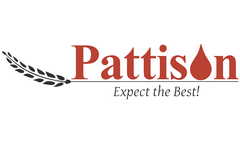Crop Management Practice Articles & Analysis: Older
13 articles found
Introduction: Water scarcity and the need for sustainable water management practices are becoming increasingly critical in agriculture. ...
ByJXCT
Monitoring soil health is essential for farmers to make informed decisions about crop management practices, fertilizer application, and irrigation strategies. ...
ByJXCT
By measuring soil EC, farmers can gain insights into soil moisture levels and adjust irrigation practices accordingly. This helps in optimizing water usage, preventing over- or under-irrigation, and promoting efficient water management. ...
Mitigates for deviations by monitoring input use analytics by field, crop and varietals. 3) Improve Management of Workers and Field Operations Efficiently overseeing the farm crew can make or break an agricultural company. ...
ByAGRIVI
Stepping forward with technological advancements Agriculture is one of the oldest industries known to man, and many traditional methods and commercial farming practices are still unrivalled. However, technological advancements are continuing at a rapid pace, and rather than shun these, commercial farmers can utilise them to improve their operations. Technology will probably ...
Western Canada has a short growing season which makes another pass for top dressing fertilizer sometimes difficult to achieve. Many crops have the fertilizer applied during the seeding season with Liquid Distribution Systems, (like these kits we make here). Often this will meet the crops fertilizer requirements for the whole season. Making one pass makes sense in a season that brings the right ...
So, let’s talk about the roll N, P, and K each play in the soil, how implementing VRT can prevent nutrient loss, and some tips for adding loss prevention to your nutrient management plan. Nitrogen (N) Nitrogen is the most important nutrient for crop production, but it’s also most susceptible to being lost before your crop can use ...
ByGrowers
Paradigm shift Fortunately, there are agroecological options available, such as conservation agriculture and the System of Rice Intensification (SRI), which differ from high-tech and input-dependent production systems. Agroecological management systems capitalise on the potential for more productive and robust crops from existing plant genomes and on their ...
Results indicate that agroforestry and grass buffers on grazed and row crop management sites significantly reduce runoff, sediment, TN, and TP losses to streams. ...
Recent attention has focused on the use of perennial, warm-season grasses as renewable energy crops. The objective of this study was to assess the effects of N fertilization on partitioning of biomass and nutrients between above- and belowground plant components by four warm-season grass species in Iowa. ...
Knowledge of complex relationships between soils, crops, and management practices is necessary to develop sustainable agricultural production systems. ...
Crop management practices influence readily and potentially available N in soil. In this study, we evaluated the effects of organic amendment history and crop rotation on potentially mineralizable N (N0), mineralizable N pools, and field estimates of soil N supply in potato (Solanum tuberosum L.) production, and evaluated a suite ...
Improved crop and N management practices are needed to increase soil N storage so that N fertilization rate and the potential for N leaching can be reduced in tilled and nontilled soils. We examined the influence of cover crops and N fertilization rates on N inputs from cover crops, cotton (Gossypium hirsutum L.) ...








